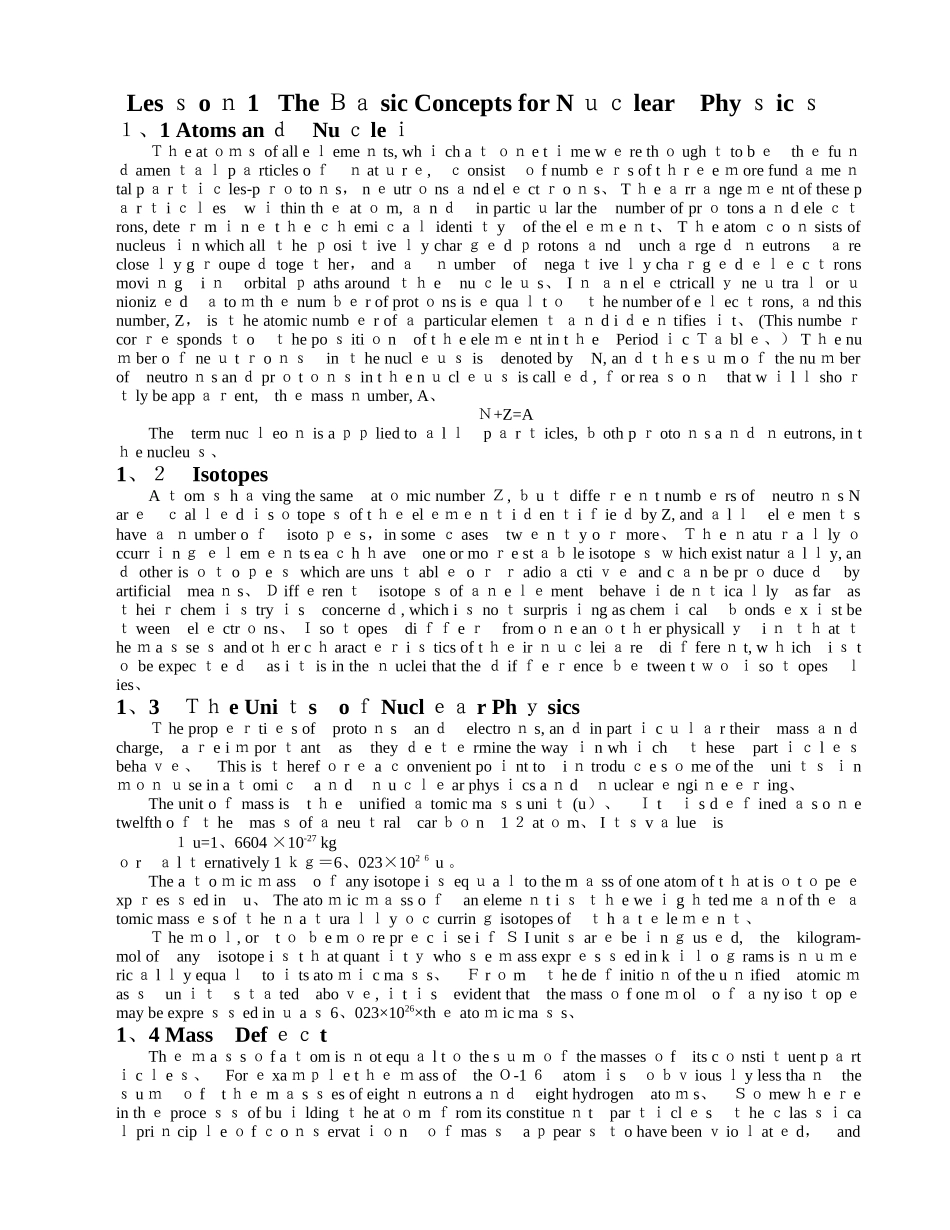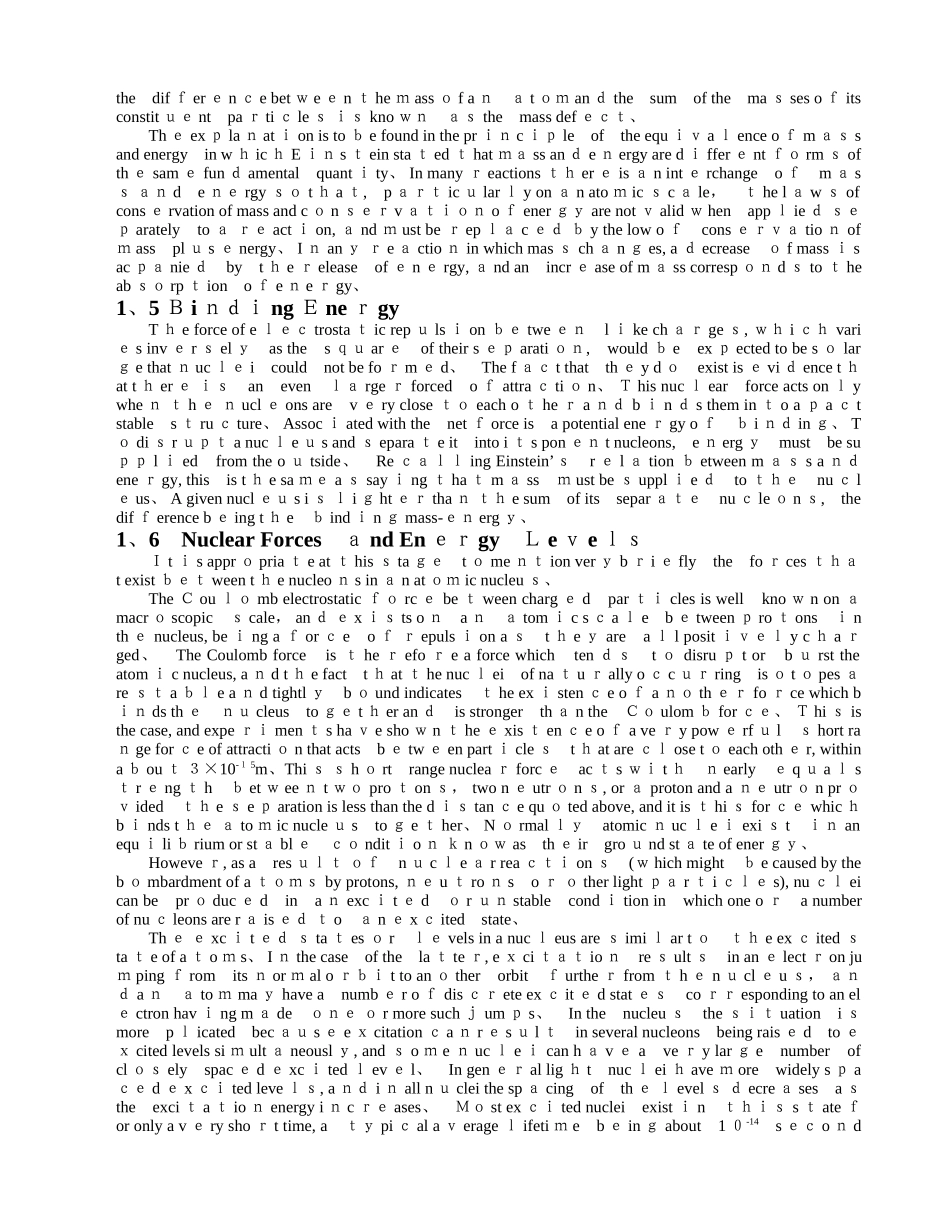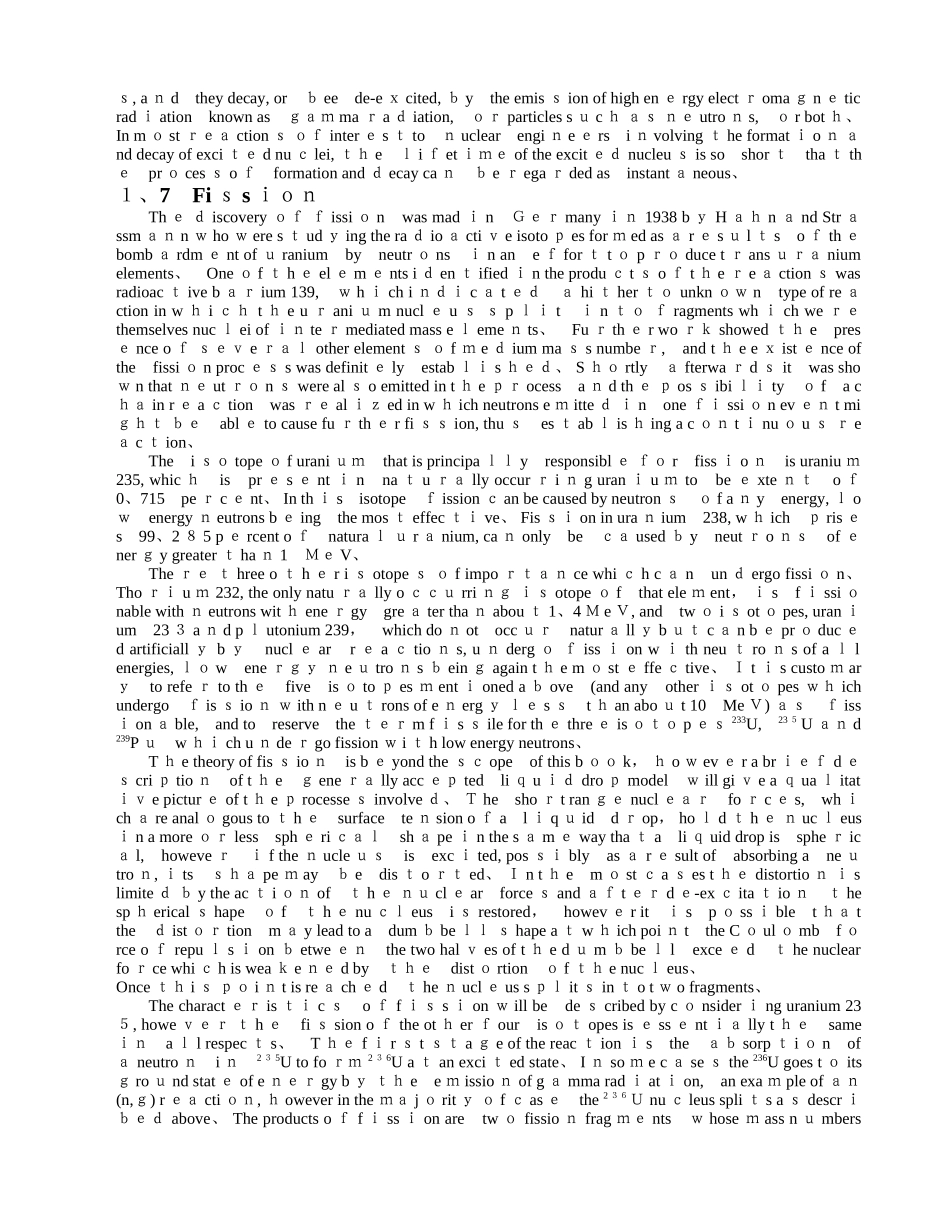Les s o n 1 The Ba sic Concepts for N uc lear Phy s ic s1、1 Atoms an dNu c le iTh e at oms of all e l eme n ts, wh i ch a t on e t i me w e re th o ugh t to b eth e fu nd amen tal p a rticles o fn at u r e, c onsist o f numb er s of t h r e e m ore fund a me ntal p a r tic les-p ro to n s , n e utr o ns a nd el e ct r o n s 、 T h e a rr a nge me nt of these pa r t i cl es w i thin th e at o m, a n din partic u lar the number of pr o tons a n d ele ctrons, dete r m i n e t h e ch emi c a l identi t y of the el em e n t 、 T h e atom c o n sists of nucleus i n which all t he p osi t ive l y char ge d p rotons a nd unch a rge d n eutrons a re close l y g r oupe d toge t her , and an umber of nega t ive l y cha r g e d ele c t rons movi n g i norbital p aths around th e nu c le u s 、 I n a n el e ctricall y ne u tra l or unioniz e d a to m th e num be r of prot o ns is e qua l t ot he number of e l ec t rons, a nd this number, Z , is t he atomic numb e r of a particular elemen t an d i d e n tifies i t 、 (This numbe r cor re sponds t o t he po s iti o n of t h e ele me nt in t h e Period i c Ta bl e、) T h e num ber o f ne u t r o nsin t he nucl eus is denoted by N, an d t h e s u m o f the nu m ber of neutro n s an d pr o t ons in t h e n u cl eus is call ed, f or rea s o nthat w i l l sho rt ly be app ar ent, th e mass...


